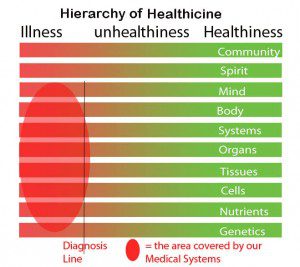Guest Writer for Wake Up World
If you are trying to learn about what motivated the recent school killings, and similar incidents, you will find nothing of use from the medical profession. There are many guesses about mental illness, from depression to psychopathy, many observations about drug side effects and withdrawal symptoms – but no real answers.
There are two reasons for this situation.
First: the medical paradigm ignores healthiness and unhealthiness. The medical profession works by diagnosing illness (often not the cause) and prescribing treatment once illness is diagnosed. Diagnosis typically does not happen unless the patient decides to visit a doctor and in most cases, monitoring (except in clinical studies) is non-existent unless the patient decides to return. Hands-off medicine is only active in the presence of a diagnosable illness. If a patient is ‘healthy’, or merely ‘unhealthy’, no diagnosis is made and no action is taken.
Second: the medical profession only acknowledges part of the hierarchy of healthiness and only attempts to treat a smaller part. The layers of the hierarchy of healthiness that are most relevant in the community killings are misunderstood (at best) or ignored by the medical profession. The medical profession’s coverage of the hierarchy of healthicine can be seen in the diagram below.
The field of medicine is based on diagnosis. If there is no diagnosis, there is no illness, and therefore the health of the subject can be ignored. In a few cases, the medical system attempts to ‘pre-diagnose’ or provide early warnings of illness. However, these are seldom used to improve healthiness – more often for early prescription of drugs.
The field of medicine treats illnesses, primarily in the layers of cells, tissues, organs, systems, body and some small part of the mind. Illnesses of nutrition, including toxins, are poorly diagnosed, even those that are well studied. Illnesses of genetics are seldom a factor in medical practice, with a few exceptions, although there is lots of research driving potential development of drugs.
The layer of mind is very poorly covered by the field of medicine. There is much debate today whether psychiatry is a science, or simply guesswork at present. The spirit layer is almost totally ignored by our medical systems. Everyone has heard of someone with a ‘broken spirit’, but there is no diagnosis and no treatment. Problems with the spirit are generally lumped with illnesses of the mind – and also treated with drugs. The layer of community healthiness is off the medical charts. Our medical systems make no attempts to understand healthiness of communities, and have no awareness of unhealthinesses or illness that can and do exist in many communities. Neither do they understand the community health aspects of individuals in communities.

Which layers of the hierarchy of healthiness are ‘unhealthy’ in cases of these community killings? It’s not clearly not cellular, tissue, organ, system, or body unhealthiness.
Therefore, community killings are a result of unhealthiness in the areas where our medical systems are weakest. Community healthiness, spirit healthiness, mind healthiness and possibly nutrient healthiness.Someone who commits mass killings is suffering from severe unhealthiness or deficiencies in community healthiness. Healthiness of the mind and the spirit is also weak or severely imbalanced. Is nutritional health a factor? That has not been studied.
Let’s start with the mind. We know that people who committed the school killings have serious mental problems of some sort. Normal people can’t kill without conscience or remorse. We also know that most, if not all, had been diagnosed with specific mental illnesses. The shooters in Columbine and Sandy Hook were both prescribed and taking drugs for mental illnesses – that were obviously not correctly treated. It is possible, even likely that the diagnosis and treatments only made things worse. What do our medical systems think about the line between the body and the mind? The brain consists of nutrients, coalesced into cells, grouped into tissues, creating a body organ that is part of the entire nervous system. Where is the mind? The mind is a layer above each of these sub-components. It is the whole that is greater than the sum of the parts. It is entirely possible that some small isolated part of the mind is responsible for this behavior – but the mind is very complex, and poorly understood by medicine.
The Spirit? What was the healthiness of the spirit of the shooters? Were their spirits strong and healthy? Clearly not. Their spirits were severely damaged. But what do our medical systems know about the spirit? Can our medical systems measure or even detect a strong spirit? A weak spirit? Is there a difference between a strong spirit and a healthy spirit – as there can be a difference between a person who is physically strong and a person who has well balanced healthiness? The field of medicine has nothing to say about the spirit, and prefers to pretend that it does not exist, sometimes comparing it to witchcraft via the placebo effect. The spirit is a complex, important aspect of healthiness – and of unhealthiness in these cases. In virtually all cases of community killings, the spirit of the killer is attempting – and generally succeeding in committing suicide. It is important to understand that community killings are suicides first, and killings only to attract attention to the suicide. The killings are the last scream of the suicide.
What about the community healthiness in these cases? Community healthiness has two important components to consider. The community healthiness of the individual, the person who committed the killings, and the community healthiness of other individuals and communities that the killer interacts with.
There has been much discussion and many people have suggested that community killers are psychopaths. However, the medical system does not recognize psychopaths. There is ‘officially’ no way to diagnose a psychopath. There is a possible diagnosis of “ASPD – anti-social personality disorder“, however, this diagnosis requires that the patient be at least 18 years of age, and must have been observed to “repeatedly perform… acts that are grounds for arrest.” Eg. you can’t have this illness until after you commit more than one crime. Medical officials estimate that 3 percent of males, and 1 percent of females have ASPD. But do you know of any females who committed mass killings? Clearly the diagnosis of ASPD leaves a lot to be explored.
What is a psychopath? A psychopath is an individual who has very low, possibly non-existent ‘community healthiness’. However our medical system stops viewing healthiness at the layer of the mind – and does not consider the spirit and community layers. It simply doesn’t understand.
And what about the healthiness of the communities where these individuals live? Do their communities, their families, their many communities, from work to religion, to businesses, to medical, to various layers of government consist of healthy communities? That contribute to the healthiness of their members? Or are they unhealthy? Medical science does not study ‘illness of communities’ and therefore cannot study ‘healthiness of communities’. If we are to optimize our healthiness – we need to understand and improve the healthiness of our various communities.
Can we learn to understand spirit healthiness and community healthiness? We can and will, slowly or quickly, learn more about mental healthiness, but until we recognize spirit healthiness and community healthiness as important aspects of healthicine -we will not have the complete picture.
But, I did mention nutrition as well. What about the nutritional health of the killers. Was that a factor? The sad truth about nutrition is that medical science prefers to study nutrients in isolation – and diagnoses specific illnesses for specific deficiencies or excesses of nutrients or toxins. But there is virtually no scientific study of most nutrient deficiencies and excesses in combination. It is possible to be moderately deficient in many nutrients and moderately excessive in many toxins without any diagnosis. Are the aspects of mental unhealthiness, spirit unhealthiness and community unhealthiness created or exacerbated by nutrition? We won’t really be able to tackle those questions until we begin study those areas of healthiness more effectively – and until we tackle nutrient healthiness in a wholistic, comprehensive manner.
We should start now. Tracy
Previous articles by Author
- The Medicines Myth
- Why We Need More Open Source Medicines
- Are You Getting Enough Vitamin M?
- Fratricide, Filicide, Homicide, Suicide, Genocide, Pesticides, Herbicides, di-oxides, Climaticide, Earthicide, Planeticide? Can we hide?
- What are the Symptoms of Healthiness and Healing?
- The Hierarchy of Healthicine
About the Author
Canadian born Tracy Kolenchuk is the author of A New Theory of Cure and several other books.
Tracy is not a doctor. He is the founder of www.healthicine.org and www.personalhealthfreedom.blogspot.com where he works to change the way the world defines and looks at health, healthiness, healthicine, disease, and cure.

If you've ever found value in our articles, we'd greatly appreciate your support by purchasing Mindful Meditation Techniques for Kids - A Practical Guide for Adults to Empower Kids with the Gift of Inner Peace and Resilience for Life.
In the spirit of mindfulness, we encourage you to choose the paperback version. Delve into its pages away from screen glare and notifications, allowing yourself to fully immerse in the transformative practices within. The physical book enriches the learning process and serves as a tangible commitment to mindfulness, easily shared among family and friends.
Over the past few years, Wake Up World has faced significant online censorship, impacting our financial ability to stay online. Instead of soliciting donations, we're exploring win-win solutions with our readers to remain financially viable. Moving into book publishing, we hope to secure ongoing funds to continue our mission. With over 8,500 articles published in the past 13 years, we are committed to keeping our content free and accessible to everyone, without resorting to a paywall.
Disclaimer: This article is not intended to provide medical advice, diagnosis or treatment. Views expressed here do not necessarily reflect those of Wake Up World or its staff.







